Real-Time Micro-Monitoring of Surface Temperature and Strain of Magnesium Hydrogen Tank through Self-Made Two-In-One Flexible High-Temperature Micro-Sensor
Abstract
:1. Introduction
2. Literature Review
3. Design of a Two-In-One High-Temperature Flexible Micro-Sensor
3.1. Design Principle of the Micro-Temperature Sensor
3.2. Design Principle of the Micro-Strain Sensor
4. Production Process of a Two-In-One High-Temperature Flexible Micro-Sensor
4.1. Polyimide Thin Film Cleaning
4.2. Lithography—Definition of an Electrode Pattern
4.3. Metal Thin Film Deposition
4.4. Lithography Protective Layer
5. Magnesium–Titanium Hydrogen Storage Tank
6. Correction and Micro-Monitoring of Two-In-One Flexible Micro-Sensor
6.1. Instant Microscopic Monitoring of Surface Temperature and Strain of Hydrogen Storage Tank
6.2. Magnesium–Titanium Hydrogen Storage Tank Thermal Expansion Test
7. Conclusions
Author Contributions
Funding
Acknowledgments
Conflicts of Interest
References
- Energy Technology Perspectives 2022, International Energy Agency, 2022. Available online: https://www.iea.org/events/accelerating-clean-energy-innovation-global-needs-and-opportunities-for-india (accessed on 1 July 2022).
- IEA World Energy Outlook 2021. 2021. Available online: https://www.iea.org/reports/world-energy-outlook-2021 (accessed on 1 July 2022).
- Zhang, Q.; Xu, H.; Jia, X.; Zu, L.; Cheng, S.; Wang, H. Design of a 70 MPa type IV hydrogen storage vessel using accurate modeling techniques for dome thickness prediction. Compos. Struct. 2020, 236, 111915–111924. [Google Scholar] [CrossRef]
- Nguyen, D.H.; Kim, J.H.; Vo, T.T.N.; Kim, N.; Ahn, H.S. Design of portable hydrogen tank using adsorption material as storage media: An alternative to Type IV compressed tank. Appl. Energy 2022, 310, 118552–118567. [Google Scholar] [CrossRef]
- Ishimoto, J.; Shimada, S. Coupled computing for reactive hydrogen leakage phenomena with crack propagation in a pressure tank. Int. J. Hydrogen Energy 2021, 47, 2735–2758. [Google Scholar] [CrossRef]
- Passing, M.; Pistidda, C.; Capurso, G.; Jepsen, J.; Metz, O.; Dornheim, M.; Klassen, T. Mg-based development and experimental validation of kinetic models for the hydrogenation/dehydrogenation of Mg/Al based metal waste for energy storage. J. Magnes. Alloy. 2022, in press. [Google Scholar] [CrossRef]
- Shang, Y.; Pistidda, C.; Gizer, G.; Klassen, T.; Dornheim, M. Mg-based materials for hydrogen storage. J. Magnes. Alloy. 2021, 9, 1837–1860. [Google Scholar] [CrossRef]
- Yartys, V.A.; Lototskyy, M.V.; Akiba, E.; Albert, R.; Antonov, V.E.; Ares, J.R. Magnesium based materials for hydrogen based energy storage: Past, present and future. Int. J. Hydrog. Energy 2019, 44, 7809–7859. [Google Scholar] [CrossRef]
- Lee, C.Y.; Shen, C.C.; Lee, S.J.; Chiu, C.W.; Lin, H.T. Real-time microscopic monitoring of temperature and strain on the surface of magnesium hydrogen storage tank by high temperature resistant flexible integrated microsensor. Int. J. Hydrog. Energy 2022, 47, 12815–12821. [Google Scholar] [CrossRef]
- Otsuki, Y.; Shigemasa, K.; Araki, T. Measurement of temperature difference on catalyst layer surface under rib and channel in PEFC using micro sensors. Int. J. Heat Mass Transf. 2020, 160, 120169. [Google Scholar] [CrossRef]
- Kang, L.; Shi, Y.; Zhang, J.; Huang, C.; Zhang, N.; He, Y.; Li, W.; Wang, C.; Wu, X.; Zhou, X. A flexible resistive temperature detector (RTD) based on in-situ growth of patterned Ag film on polyimide without lithography. Microelectron. Eng. 2019, 216, 111052–111057. [Google Scholar] [CrossRef]
- Sarajlić, M.; Frantlović, M.; Smiljanić, M.M.; Rašljić, M.; Cvetanović-Zobenica, K.; Lazić, Ž.; Vasiljević-Radović, D. Thin-film four-resistor temperature sensor for measurements in air. Meas. Sci. Technol. 2019, 30, 115102–115109. [Google Scholar] [CrossRef]
- Morisaki, M.; Minami, S.; Miyazaki, K.; Yabuki, T. Direct local heat flux measurement during water flow boiling in a rectangular minichannel using a MEMS heat flux sensor. Exp. Therm. Fluid Sci. 2020, 121, 110285. [Google Scholar] [CrossRef]
- Zhou, S.; Shu, B.; Yu, Z.; Huang, Y.; Zhang, Y. Experimental study and mechanism analysis of the flow boiling and heat transfer characteristics in microchannels with different surface wettability. Micromachines 2021, 12, 881. [Google Scholar] [CrossRef] [PubMed]
- Cui, J.; Liu, H.; Li, X.; Jiang, S.; Zhang, B.; Song, Y.; Zhang, W. Fabrication and characterization of nickel thin film as resistance temperature detector. Vacuum 2020, 176, 109288. [Google Scholar] [CrossRef]
- Ottermann, R.; Klaas, D.; Dencker, F.; Wurz, M.C.; Hoheisel, D.; Rottengatter, P.; Kruspe, T. Direct Deposition of Thin-Film Strain Gauges with a New Coating System for Elevated Temperatures. In Proceedings of the 2020 IEEE Sensors, Rotterdam, The Netherlands, 25–28 October 2020; IEEE: Piscataway, NJ, USA,, 2020; pp. 1–4. [Google Scholar] [CrossRef]
- Shu, J.; Yang, R.; Chang, Y.; Guo, X.; Yang, X. A flexible metal thin film strain sensor with micro/nano structure for large deformation and high sensitivity strain measurement. J. Alloy. Compd. 2021, 879, 160466–160473. [Google Scholar] [CrossRef]
- Kal, S.; Bagolini, A.; Margesin, B.; Zen, M. Stress and resistivity analysis of electrodeposited gold films for MEMS application. Microelectron. J. 2006, 37, 1329–1334. [Google Scholar] [CrossRef]
- Lee, C.-Y.; Lee, S.-J.; Chen, C.-H.; Hsu, S.-Y.; Chien, Y.-H.; Lee, T.-J. Flexible 4-in-1 microsensor for in-situ diagnosis of electric motorcycle fuel cell range extender. Sens. Actuators A Phys. 2020, 315, 112319. [Google Scholar] [CrossRef]



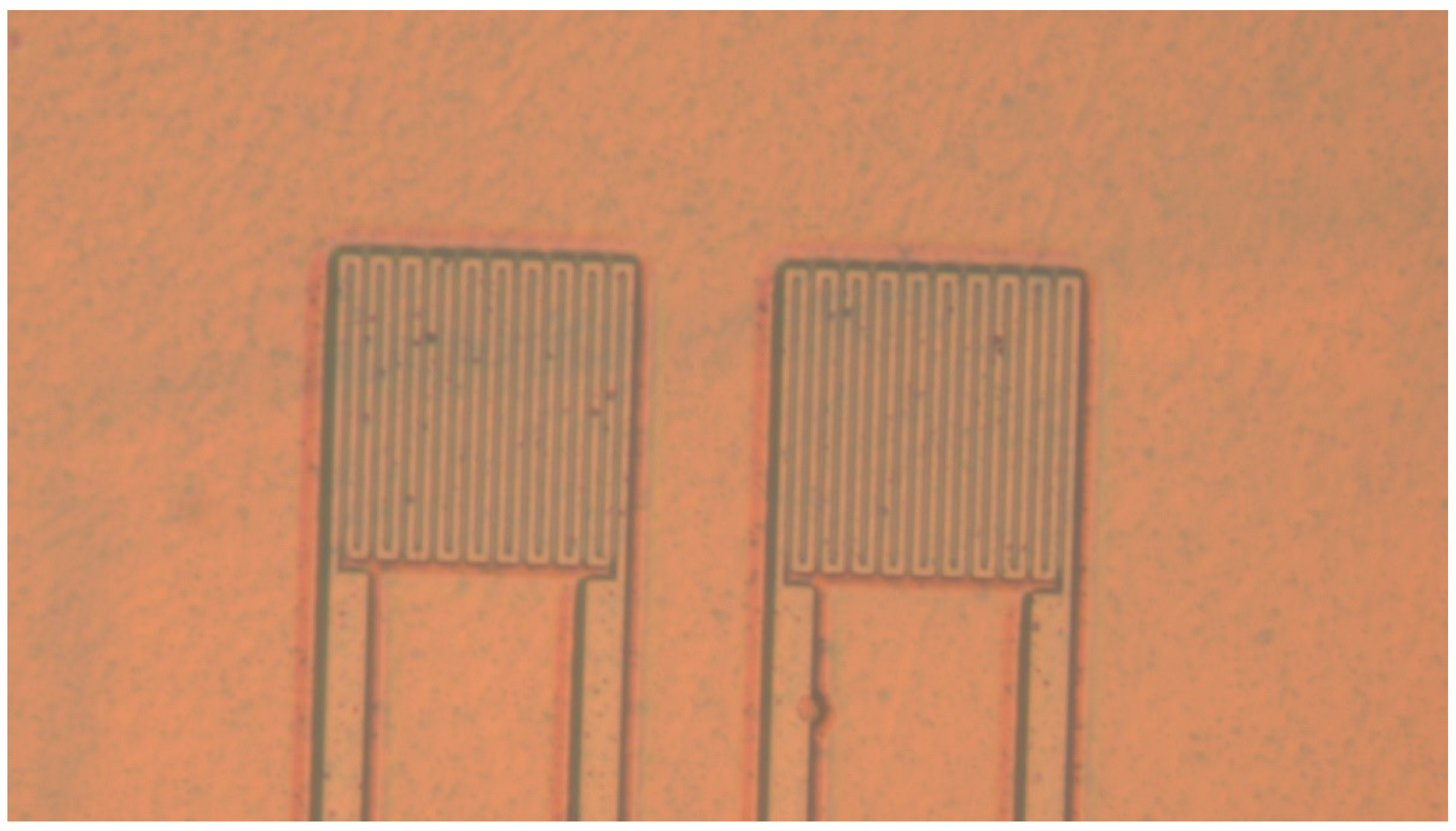
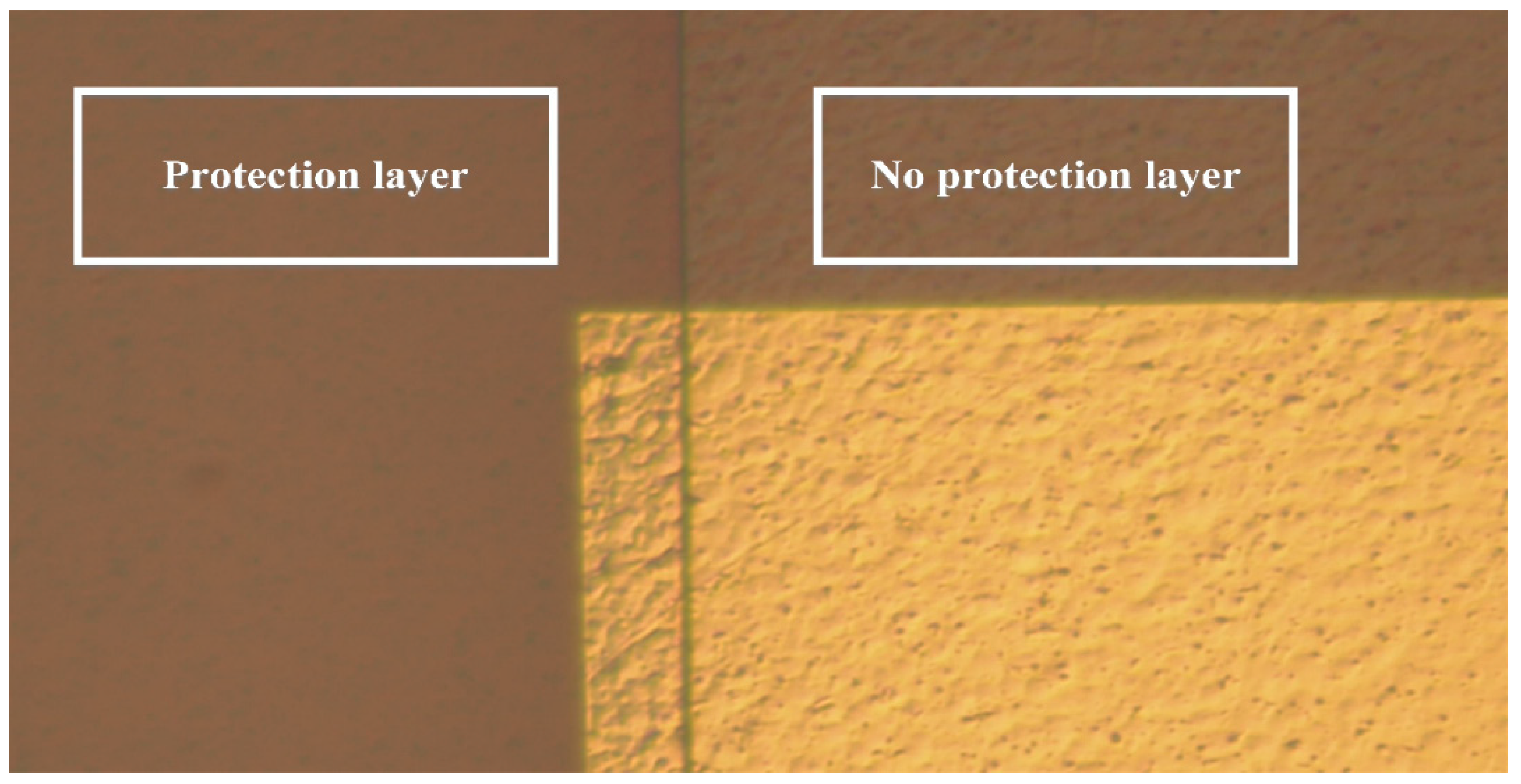

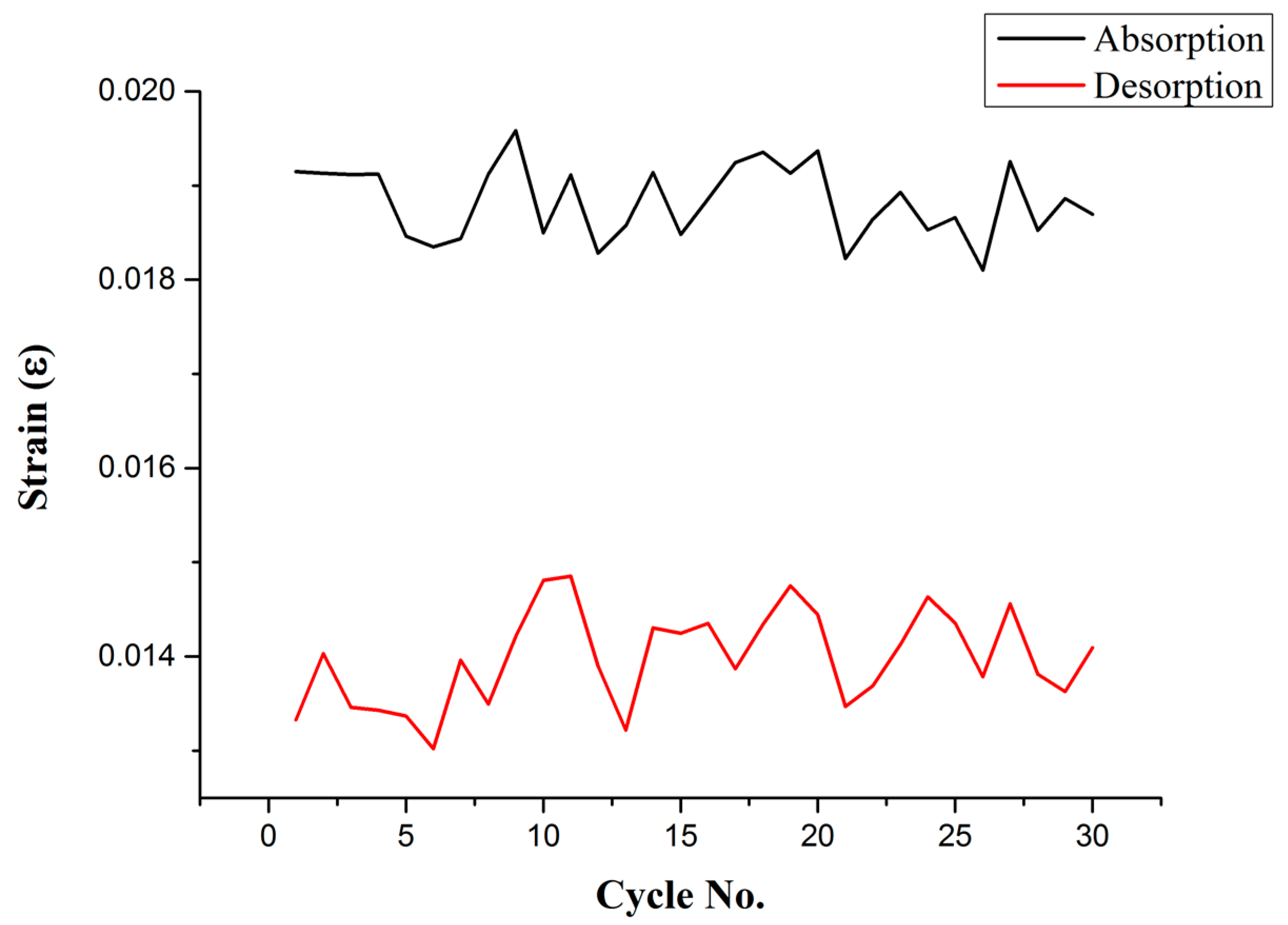


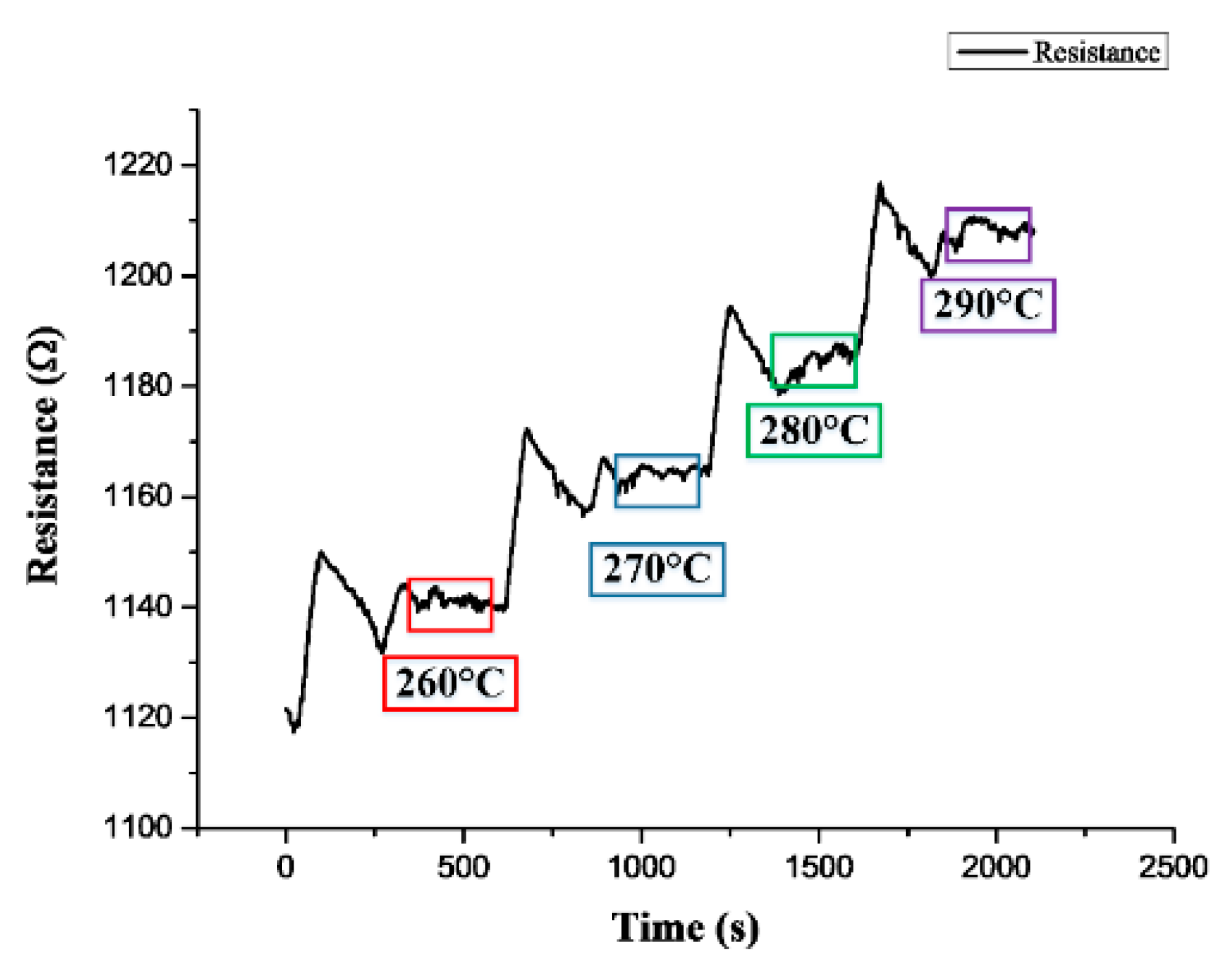
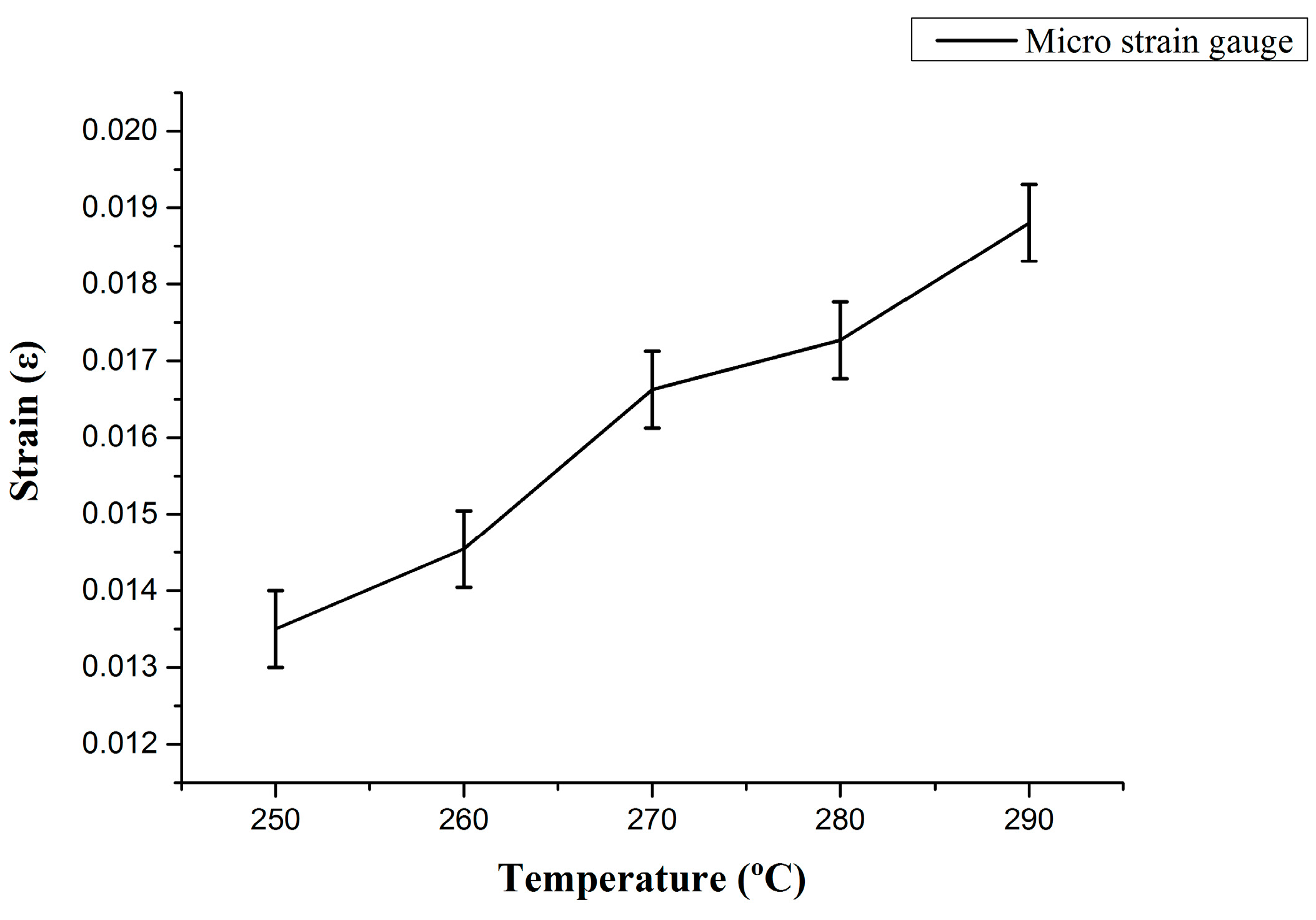
Publisher’s Note: MDPI stays neutral with regard to jurisdictional claims in published maps and institutional affiliations. |
© 2022 by the authors. Licensee MDPI, Basel, Switzerland. This article is an open access article distributed under the terms and conditions of the Creative Commons Attribution (CC BY) license (https://creativecommons.org/licenses/by/4.0/).
Share and Cite
Lee, C.-Y.; Shen, C.-C.; Chiu, C.-W.; Hsieh, H.-T. Real-Time Micro-Monitoring of Surface Temperature and Strain of Magnesium Hydrogen Tank through Self-Made Two-In-One Flexible High-Temperature Micro-Sensor. Micromachines 2022, 13, 1370. https://doi.org/10.3390/mi13091370
Lee C-Y, Shen C-C, Chiu C-W, Hsieh H-T. Real-Time Micro-Monitoring of Surface Temperature and Strain of Magnesium Hydrogen Tank through Self-Made Two-In-One Flexible High-Temperature Micro-Sensor. Micromachines. 2022; 13(9):1370. https://doi.org/10.3390/mi13091370
Chicago/Turabian StyleLee, Chi-Yuan, Chia-Chieh Shen, Chun-Wei Chiu, and Hsiao-Te Hsieh. 2022. "Real-Time Micro-Monitoring of Surface Temperature and Strain of Magnesium Hydrogen Tank through Self-Made Two-In-One Flexible High-Temperature Micro-Sensor" Micromachines 13, no. 9: 1370. https://doi.org/10.3390/mi13091370




